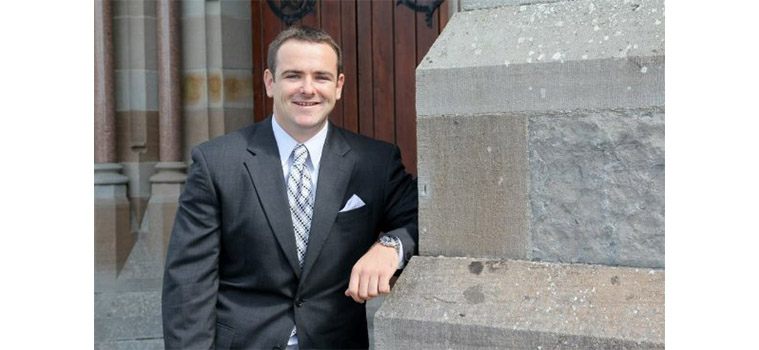The Port of San Francisco is unique in its ability to handle many types of cargo in an efficient and cost-effective way.

The Port of San Francisco recently hired Brendan OíMeara as the portís new maritime marketing director.
BY PATRICK BURNSON
Published: October, 2017
The Port of San Francisco is unique in its ability to handle many types of cargo in an efficient and cost-effective way. For example, Pier 80’s auto-processing terminal is ideally located to serve the large network of car dealerships in Northern California.
Several harbor and cargo service facilities are also located near the port’s terminals, offering access to tug and barge companies, heavy lift crane services, cold storage, warehousing and a Foreign Trade Zone (FTZ).
An FTZ is a specially designated area in or near a U.S. customs port of entry, but outside of any U.S. customs territory. In these specially designated areas, foreign and domestic merchandise can be stored and manipulated together. Goods can be brought into a zone without formal customs entry or without incurring customs duties or excise taxes until they are entered into American commerce.
FTZs were created by the Foreign Trade Zones Act of 1934 in an attempt to promote U.S. participation in trade and commerce by reducing or eliminating the unintended costs or obstacles associated with U.S. trade laws. Employment that might normally be shifted to a foreign country is thereby encouraged to remain in the United States.
In 1948, the Port of San Francisco received a grant of authority to establish, operate, promote and maintain Foreign Trade Zone #3 for the City and County of San Francisco. The geographic scope of FTZ #3 has since been expanded to include all of San Francisco, San Mateo, Marin, Contra Costa, and Solano Counties, and most of Napa and Sonoma Counties.
A noteworthy recent development at the Port of San Francisco was the hiring of Brendan O’Meara as the port’s new maritime marketing director. A native San Franciscan, he began his maritime career at the Port of Oakland in terminal operations for the bygone Ports America Outer Harbor, where he worked for five years.
In this exclusive interview, he outlines his goals for the Port of San Francisco and reflects on the current state of the working waterfront industry.
Bay Crossings: How long have you been in charge of the port’s maritime marketing division?
Bredan O’Meara: I have been with the port for a year and a half.
BC: What is your mission?
O’Meara: My mission is to grow the port’s cargo portfolio, which is in keeping with our “Piers 80-96 Maritime Eco-Industrial Center Strategy.” I came onboard at a very exciting time for the port. On my second day, the San Francisco Port Commission approved our agreement with Pasha Automotive Services to open an auto processing terminal at Pier 80. I have thoroughly enjoyed being part of this project and working to grow a new line of business for the port.
BC: A congressional watchdog agency has recommended that U.S. Customs and Border Protection take a more “holistic approach” to its compliance oversight of the nation’s FTZs, rather than conducting these activities on a case-by-case basis. Is this a good idea for the Port of San Francisco?
O’Meara: This could be a good idea but it is also important to have checks and balances for something as complex as FTZs. The involvement of multiple government agencies always makes it difficult to get the described “holistic approach” but I am fully in support of making the process smoother.
BC: What new developments have occurred at the port’s FTZ?
O’Meara: I think an important piece is just ensuring local companies are aware of FTZs and what the benefits are.
BC: Do you anticipate new business there?
O’Meara: We are always looking to help local businesses utilize the benefits of our FTZ area but I do not anticipate any unexpected growth. It takes a specific type of business case for an FTZ to make economic sense. There need to be substantial savings to justify the investment on the infrastructure needed to comply with the security standards.
BC: What other new initiatives is the cargo division introducing?
O’Meara: The cargo division is continuing to support the local construction industry with our dry bulk imports. This is an area we are targeting to expand and increase volumes.
Patrick Burnson is the executive editor of Logistics Management. www.logisticsmgmt.com

